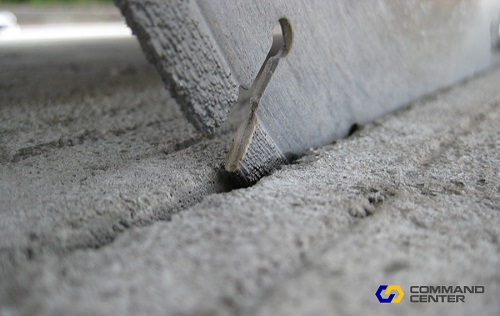 Friday, April 26, 2024
Friday, April 26, 2024  Friday, April 26, 2024
Friday, April 26, 2024 
In order for a joint to properly prevent random cracking, it must be saw cut before internal stresses are greater than the concrete’s strength.

Monitor concrete maturity with COMMAND Center to determine when concrete has gained enough strength to sustain saw cutting equipment and procedures. Decrease your risk for uncontrolled cracking by improving saw cutting methods with COMMAND Center maturity data and HIPERPAV, high performance paving software.
It is concrete’s nature to crack. As concrete sets and changes from a plastic to hardened state, it gains strength. At the same time, internal stresses are increasing. Once the stresses become greater than the concrete’s strength, the concrete cracks. These cracks must be controlled. Random cracking can necessitate costly early repairs or replacement, construction delays, and lost profits.
In order to control where cracks occur, contractors saw cut the concrete to create joints. Joints control random cracking by creating a weakened plane at which cracks will form. Joints are constructed at locations in the concrete that will undergo the highest early-age stresses. In highway construction, concrete pavements that have been saw cut at every 12 to 15 feet and have not been continuously reinforced through the entire slab are called jointed plain concrete pavements (JPCP).
In order for a joint to properly prevent random cracking, it must be saw cut before internal stresses are greater than the concrete’s strength. The ideal time to saw cut concrete is just after concrete has gained enough strength to support saw cutting equipment.
In many cases, contractors determine when to saw cut new concrete pavement based on experience or on an empirical-based estimation. However, this method is risky—small changes in material, the climate, design parameters, and curing can greatly affect strength gain, and stress development is not always intuitive. As a result, construction teams often saw cut the concrete too late, leading to uncontrolled cracking.
Keep Reading on CommandCenterConcrete.com and Optimize Saw Cutting